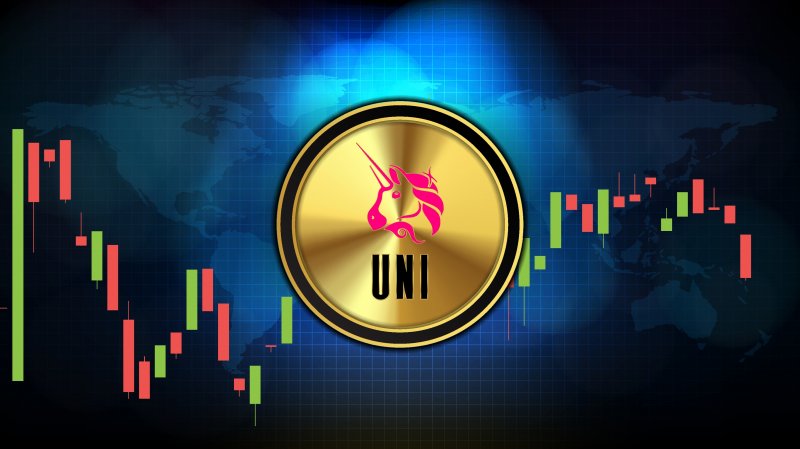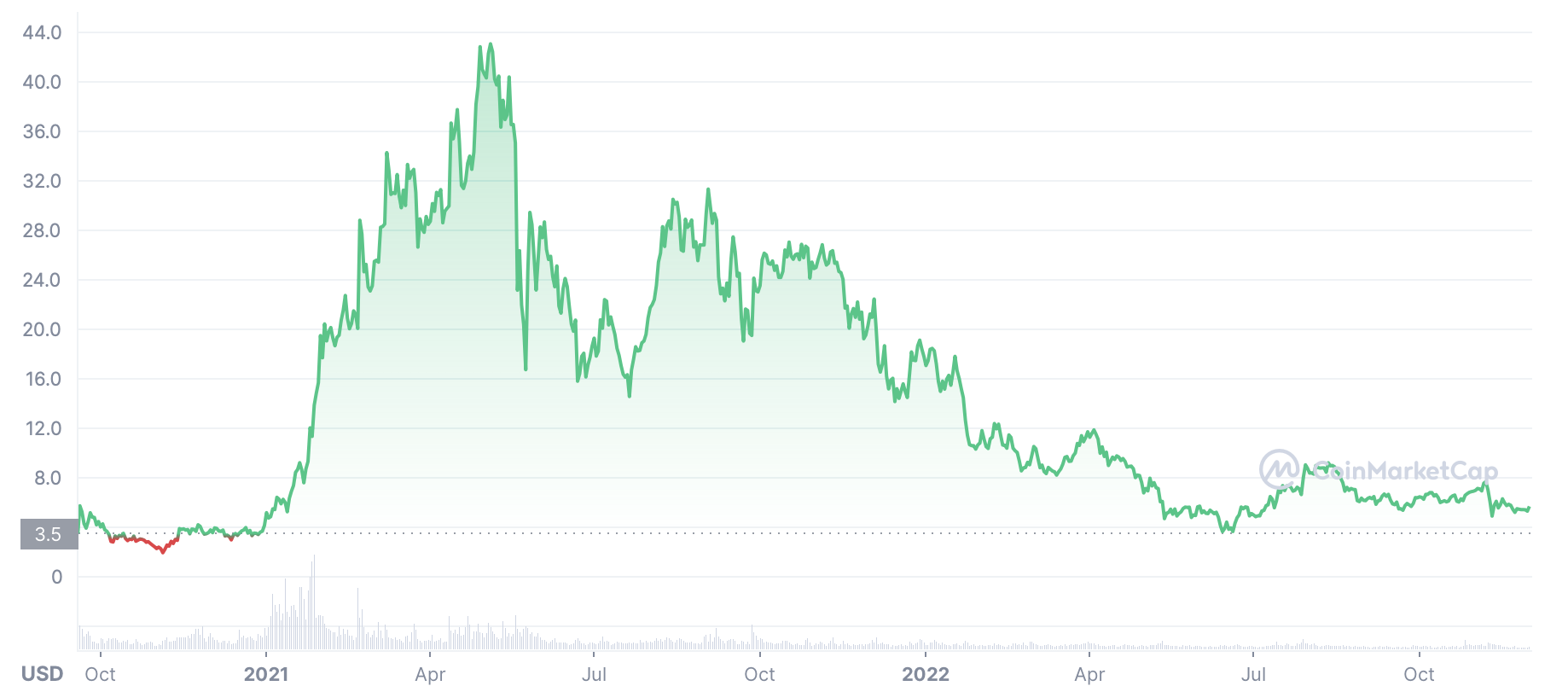Uniswap price prediction: What is uniswap (UNI)?
Can the UNI token spearhead the take-up of decentralised exchanges?
Uniswap (UNI) is one of the biggest players in its particular sector of the crypto sphere, but what is uniswap (UNI)? Let’s see if we can explain it for you.
Uniswap explained
Uniswap is a decentralised exchange (DEX) built on the Ethereum (ETH) blockchain that operates on a peer-to-peer trading system involving smart contracts, computer programs that automatically execute once certain conditions are met.
The Uniswap protocol allows transactions to take place without the need for a middleman. Additionally, it is encrypted and self-contained.
On a traditional exchange, buyers and sellers propose various prices for an asset. When a seller deems a price acceptable, they carry out a deal with the buyer. Uniswap uses a different approach, acting as an automated market maker (AMM) to enable the trading of crypto assets without the need for authorisation. According to the company’s website FAQs:
AMMs address the issue of low liquidity – in other words, it can be difficult to transfer assets on an exchange into real money – by establishing liquidity pools and incentivising liquidity providers to fill these pools with assets. The more liquidity in a pool, the simpler it is to trade.
Uniswap follows a permissionless design structure, meaning that its services are available to anyone, with no mechanism to limit who may or may not use them.
UNI serves as the Uniswap network’s utility and governance token, meaning UNI holders can vote on various proposals or delegate their votes to a third party, as well as receiving rewards for staking.
Uniswap was created in 2018 by Hayden Adams, who had previously worked as an engineer for manufacturing giant Siemens (SIE), although the UNI token did not come into circulation until 2020.
One important thing to note is that, because UNI is based on the Ethereum blockchain, it is a token, rather than a coin. You will see references to such things as a “UNI coin price prediction” or “UNI coin”, but such references are, technically speaking, wrong.
Uniswap price history

Let’s now take a look at the UNI price history. While past performance should never be taken as an indicator of future results, knowing what the token has done in the past can help give us some much needed context when it comes to either interpreting a uniswap price prediction or making one of our own.
When UNI first came onto the open market in September 2020, it was trading around $6.50, but it fell to a closing price of $2.80 on 7 October and bottomed to a daily low of $1.89 on 4 November 2020, representing a 70% fall from September prices. It closed the year at $5.17.
2021 proved to be a noteworthy year for UNI, as it got caught up in a blossoming market early on, rising from $5.25 on 11 January to $29.14 on 20 February – an increase of 455% in a little more than a month. There was more to come, though, as the token price soared to an all-time high of $44.97 on 3 May 2021.
It was back downhill from there, though, as it fell to a nadir of $14.60 on 20 July, but a recovery saw it trade at $31.30 on 1 September before another drop down meant it closed the year at $17.07.
So far, 2022 has been tough for the majority of cryptocurrencies amid fears of another so-called crypto winter after a series of market crashes, and the UNI token has been no exception. The token fell from $17.81 on 16 January to just $3.37 on 18 June, a decline of 81%.
After that, though, there was some upward movement, triggered in part by the acquisition of Genie, the self-proclaimed first non-fungible token (NFT) marketplace aggregator. The news helped UNI reach a high of $6 on 26 June, while the following month’s uniswap news that the token was to be listed on the Robinhood platform saw a run to $9.74 on 28 July.
Since then, however, the price has slipped. If you want to know why uniswap is dropping, it’s basically down to market forces. Despite the news that the Uniswap Foundation was to issue $1.8m in grants, the UNI price stood at around $6.55 on 27 September 2022. By 7 November it was worth $7.75, but the collapse of the FTX (FTT) exchange and its subsequent bankruptcty hit uniswap hard and it fell to a low of $4.77 on 9 November.
After that, though, there was some recovery and it was worth about $5.33 on 22 December. At that time there were 762.2 million UNI in circulation out of a total supply of 1 billion.
Uniswap price prediction: Forecasts for 2023 and beyond
As of 22 December, a technical analysis for uniswap from CoinCodex had a bearish outlook, with 25 technical indicators bearish and only one bullish. However, a price prediction from the site expected that the uniswap token could rise by 8.40% to reach $5.60 by 27 December.
Algorithm forecaster Wallet Investor also had a bearish outlook for uniswap, projecting that the token could fall below $1 to $0.616 by the end of 2023. It further predicted that the price could sink to $0.159 by December 2025 and $0.0245 by December 2027.
Price Prediction had a far more optimistic forecast for uniswap. It expected UNI could average $7.78 in 2023, over 50% higher than the coin’s price at the time of writing. Price Prediction further projected that the price could continue to rise, reaching $16.14 in 2025, $35.08 in 2027 and surpassing its current all-time hight to reach $50.96 in 2028. Its uniswap price forecast for 2030 was $106.54.
Lastly, DigitalCoinPrice shared bullish expectations for UNI, predicting its price could average $12.88 in 2023, climbing further to $21.43 in 2025 and $27.60 in 2027. In 2030, it expected the coin’s price could be $72.98.
When considering investing in UNI token, it’s important to keep in mind that cryptocurrency markets remain extremely volatile, making it difficult to accurately predict what a coin or token’s price will be in a few hours, and even harder to give long-term estimates. As such, analysts and algorithm-based forecasters can and do get their predictions wrong. Predictions can change at a moment’s notice.
If you are considering investing in cryptocurrency tokens, we recommend that you always do your own research. Look at the latest market trends, news, technical and fundamental analysis, and expert opinion before making any investment decision. Bear in mind that past performance is no guarantee of future returns, and never trade with money that you cannot afford to lose.